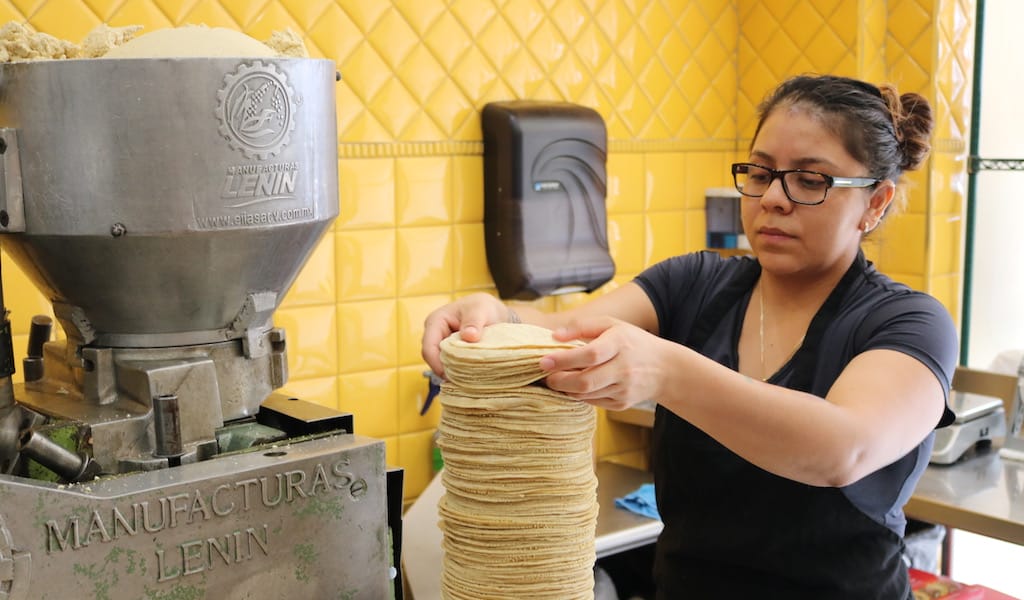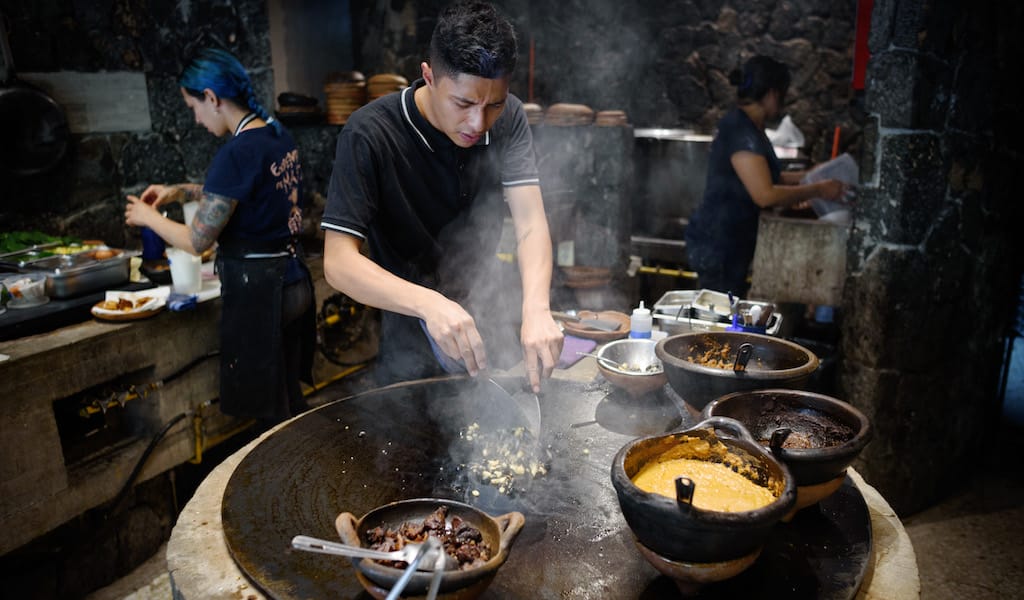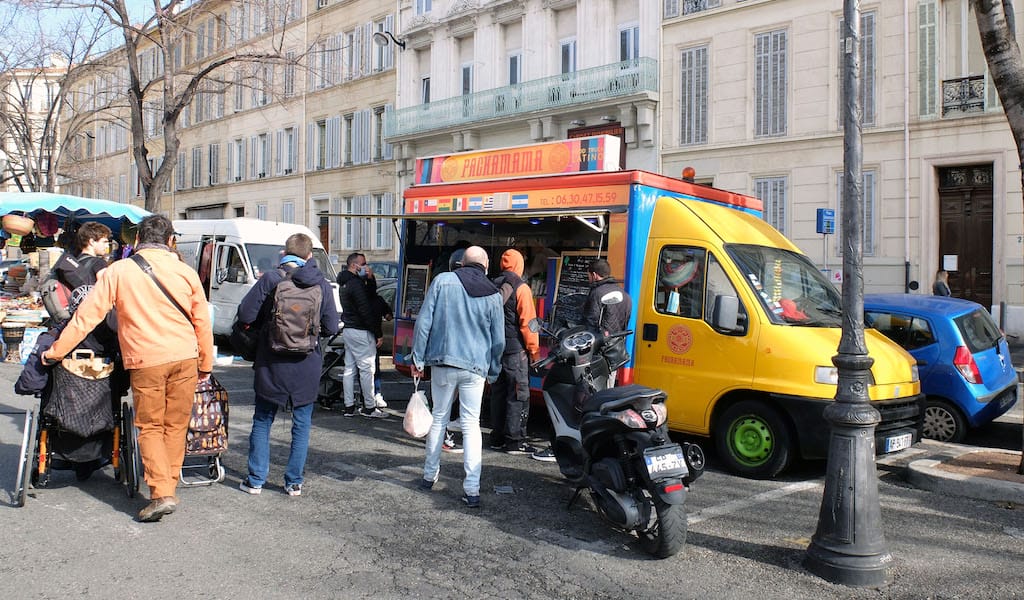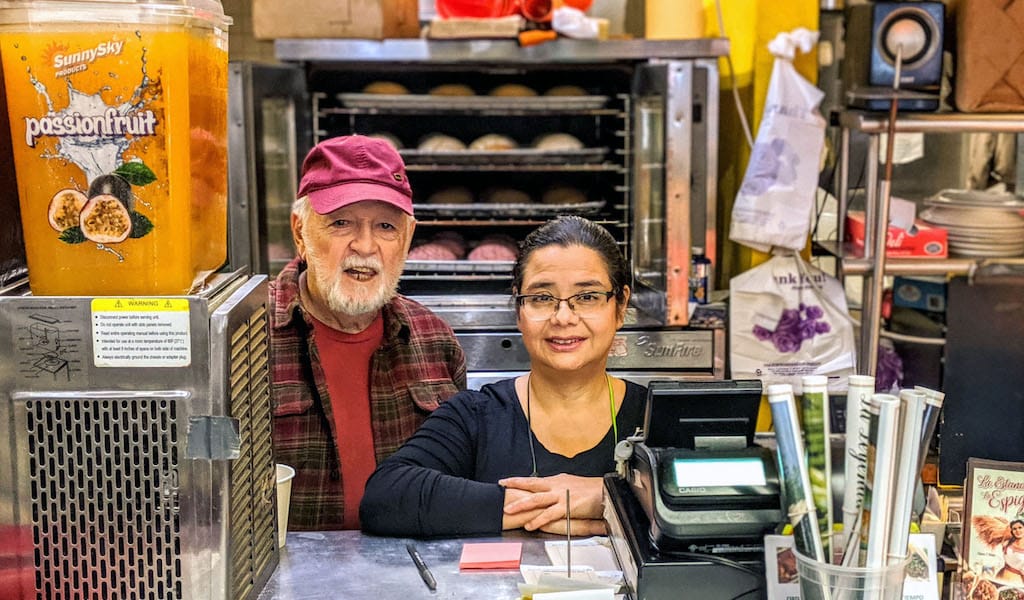Underneath the rumble of the 7 train in Corona, Tortilleria Nixtamal turns about 5,000 pounds of corn masa into 50,000 tortillas every single day. Stacks of them fill all the available shelf space in the unassuming storefront, as a lone conveyer belt spits out a continuous single-file row of perfect tortillas. Unlike mass-produced supermarket flour tortillas, or even the average corn tortilla at your local bodega, these are all made from real corn – no preservatives added – and they’re always fresh. Anything over a day or two old is turned into chips.
When Tortilleria Nixtamal opened 10 years ago, real-deal fresh corn tortillas were impossible to find in New York, and stores had only recently begun to stock Mexican goods aside from the odd can of Ortega chiles. Co-founder Fernando Ruiz was convinced he lived in the best city in the world. Why, then, couldn’t he find Mexican food that actually tasted like it does in Mexico? He believed it started with the corn and, with that simple premise, helped spark a culinary revolution in New York.
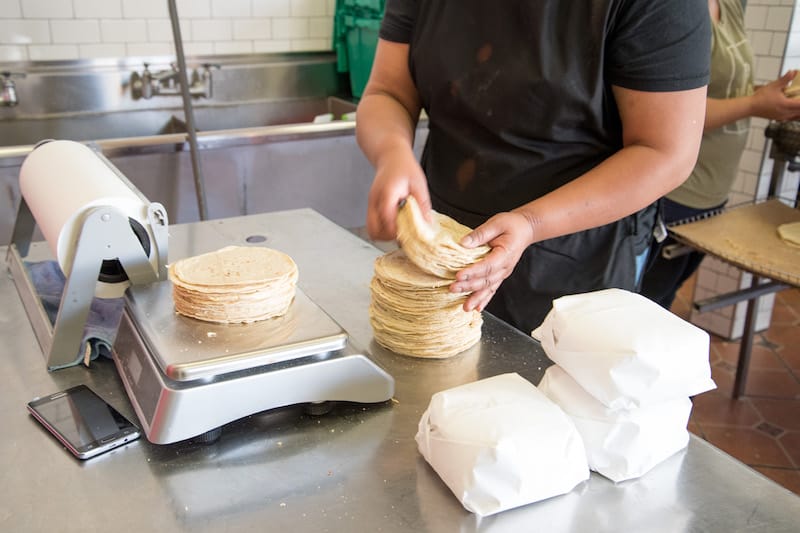
As Steven Alvarez, a professor at St. John’s College who teaches a class called Taco Literacy on the foodways of Mexican immigrants in the United States, put it to us, “their name says it all.” Alvarez explained that the process of nixtamalization, in which ground corn is cooked with water and alkaline limewater to create the more nutritious and flavorful hominy, is “an ancient technology that is a gift to the world.”
“That’s what makes them significant,” Alvarez said. “Making that [a part] of the community and for the community – to have fresh nixtamal locally sourced.” Tortilleria Nixtamal’s real influence was spotlighting the tortilla itself, not what went inside it. In Alvarez’s view, “you can put anything inside a taco if you have a really good tortilla.”
And then Nixtamal went a step further. Until 2013, the tortilleria sourced all its corn from a grower in Illinois. That was until a fledgling food entrepreneur named Jorge Gaviria approached Ruiz and his partner, Shauna Page, with an alluring offer: Gaviria could bring them real Mexican heirloom corn, grown by small-scale farmers mostly in the southern state of Oaxaca. By using Gaviria’s Masienda corn, Ruiz was able to finally bring the platonic ideal of his childhood tortillas to his new home of New York. Perhaps more significantly, Nixtamal joined an effort to revive a dying culinary tradition in Mexico.
Since the passage of the North American Free Trade Agreement (NAFTA) in 1994, Mexican culinary traditions have been fading out. Before NAFTA, Mexican cuisine revolved around the milpa, an intercropped field growing corn, beans, squash and other vegetables, with corn being king. While Mexico protected corn farmers as a national heritage, during NAFTA negotiations, the United States required Mexico to remove these protections.
Mexico’s corn economy changed overnight. According to anthropologist Alyshia Gálvez, author of the book Eating NAFTA, U.S. corn exports to Mexico increased more than 400 percent between 1997 and 2005, with much of it coming in the form of refined corn products like corn syrup. With no more subsidies protecting them, Mexican farmers could no longer grow corn for profit. According to the Wilson Center, more than two million farmers lost their jobs, and many migrated to the United States. During four years in the early 2000s, tortilla consumption dropped 15 percent, with the decline even faster in urban areas.

Now, even when Mexicans are eating tortillas, they’re mostly made in factories using a mass-produced corn flour called Maseca. In 2007, 70 percent of tortillas consumed in Mexico were produced by Gruma, the company behind Maseca, along with other brands like Mission Foods and Guerrero.
Masienda’s Gaviria was fascinated by food pathways – the stories of how ingredients came to the dinner table. He grew up with his mother’s Mexican food and, like Ruiz and Page of Nixtamal, dreamed of opening his own tortilleria.
Gaviria initially played around with the idea of buying corn from farmers in New York State, but after a few trips to Oaxaca, realized that nothing could compare to the stuff coming straight from the source. The problem, though, was that small-scale farmers were no longer growing corn except for their own personal consumption. The market for heirloom corn had mostly evaporated.
He came to the realization that he would have to create an entire supply chain for the corn from scratch, and that he would need a buyer in the United States who actually cared about Mexican heirloom corn. One of those early buyers was Tortilleria Nixtamal. The other was the Mexican chef Enrique Olvera, who was planning the opening of his New York restaurant Cosme around the same time that Nixtamal was starting to operate.
Nixtamal and Masienda are changing the economics of tortillas in both New York and in Mexico.
Gaviria’s idea was to find small-scale farmers one by one who had surplus corn, buy it from them at market price and then import it to the United States. Before Gaviria, what little market existed for heirloom corn was often exploitative. “Coyote” operations would buy a farmer’s entire crop, taking the corn and promising to pay later, but never doing so. To avoid this problem, Gaviria partnered with a nonprofit based in Mexico called the International Maize and Wheat Improvement Center (CIMMYT). Over the course of eight months, Gaviria and a CIMMYT researcher built up relationships with farmers, working out intricate systems that would determine fair prices and ensure that they were only buying surplus corn. Soon enough, they were supplying corn to Nixtamal, Cosme and food purveyors across the United States.
The problem for purchasers is that Masienda’s corn is expensive. Its price, before transportation expenses, is about four times the cost of purchasing and shipping the corn Nixtamal buys from Illinois. Outside of fine-dining spots like Cosme – as well as Nixtamal’s biggest customer of Masienda-corn tortillas, the New York-based burrito mini-chain Dos Toros – many restaurants don’t want to pay for the significant price differential.
For someone like Shauna Page, Ruiz’s partner and a self-proclaimed tortilla expert, there is a clear difference in taste between tortillas made from Masienda corn and those made from the corn grown in Illinois. Yet for someone who is not eating tortillas every day, hot off the press, it’s harder to discern between the two. So it’s no surprise that the bulk of Nixtamal’s tortillas – around 80 percent of their production – are still made from domestic corn.

Even so, Nixtamal and Masienda are changing the economics of tortillas in both New York and in Mexico. In New York, Nixtamal convinced restaurants that they should be serving tortillas made from real corn, and without preservatives, whether the corn is from Illinois or Oaxaca. And it’s not just because they taste better. Page, who is an agricultural economist by trade, said that preservatives in corn can deplete its nutritional value by at least half. As a result, Nixtamal’s tortillas are significantly healthier.
Masienda is helping spread the gospel of fresh corn tortillas not just in New York, but across the United States. It not only sells its corn to restaurants around the country, but now makes its own tortillas that are sold in gourmet grocery stores like Whole Foods.
And what does it all mean for Mexico? According to Gálvez, author of Eating NAFTA, “we are turning our appetites for this food into a market that enables farmers to do something they haven’t been able to do for the past 25 years,” i.e. to grow heirloom corn for a profit. She added that the crew at Tortilleria Nixtamal are “the only ones doing the work they’re doing” in New York.
Still, she wishes that “that every mom-and-pop Mexican restaurant could have access to a molino [mill], a communal resource, as in Mexico.” While restaurants like Cosme and companies like Masienda and Nixtamal are creating a new market for heirloom corn in Mexico, Gálvez believes they should be cognizant of whether it is accessible across disparate communities in the United States as well.
From its perch in Corona, Tortilleria Nixtamal has been advancing that goal since it opened in 2008. You can walk in any time and buy a pound of fresh tortillas for two dollars (or three if they’re pressing Masienda corn). Or visit any of Nixtamal’s partner restaurants in New York that serve its Masienda tortillas: Dos Toros, Fonda and Tacocina.
As Page said, the fight for healthy, delicious food is “one person at a time, it’s one field at a time, it’s one farmer at a time.”
For diners trying to support their efforts, it’s one taco at a time.
 September 5, 2022 Expendio de Maiz
September 5, 2022 Expendio de Maiz
Tucked against the back wall of the Expendio de Maiz kitchen are three massive metal […] Posted in Mexico City February 22, 2021 Pachamama Sud
February 22, 2021 Pachamama Sud
As the nearby church bells toll the noon hour, customers start to congregate around the […] Posted in Marseille February 4, 2020 La Estancia de la Espiga
February 4, 2020 La Estancia de la Espiga
When Tomás Gonzalez brought his family to New York City from Acapulco in 1985, they […] Posted in Queens
Leo SchwartzLeo Schwartz and Melanie Einzig
Published on December 02, 2019
Related stories
September 5, 2022
Mexico CityTucked against the back wall of the Expendio de Maiz kitchen are three massive metal pots. Containing cloudy mixtures of corn kernels and limestone water, they seem to sit unattended, when in fact intermittent yet constant attention is being paid to their progress. What is happening is one of the most ancient and important processes…
February 22, 2021
MarseilleAs the nearby church bells toll the noon hour, customers start to congregate around the Pachamama Sud food truck. Two men sip Argentinian beers at the counter, munching on chips and guacamole offered by the owner, Nanou. Another customer bellies up to the colorful truck, only to look confused by the menu. Nanou explains the…
Join our walk to enjoy home cooking in Queens!
February 4, 2020
QueensWhen Tomás Gonzalez brought his family to New York City from Acapulco in 1985, they settled first in the South Bronx. His new home had little in common with his old home, a port city and the tourist heart of Mexico’s Guerrero State on the Pacific Coast. But one constant remained: his desire to cook.…







































